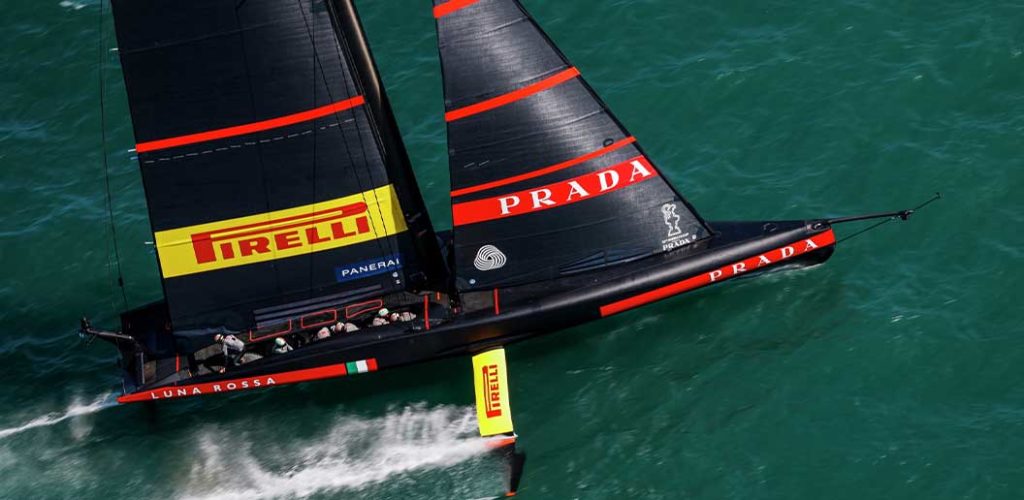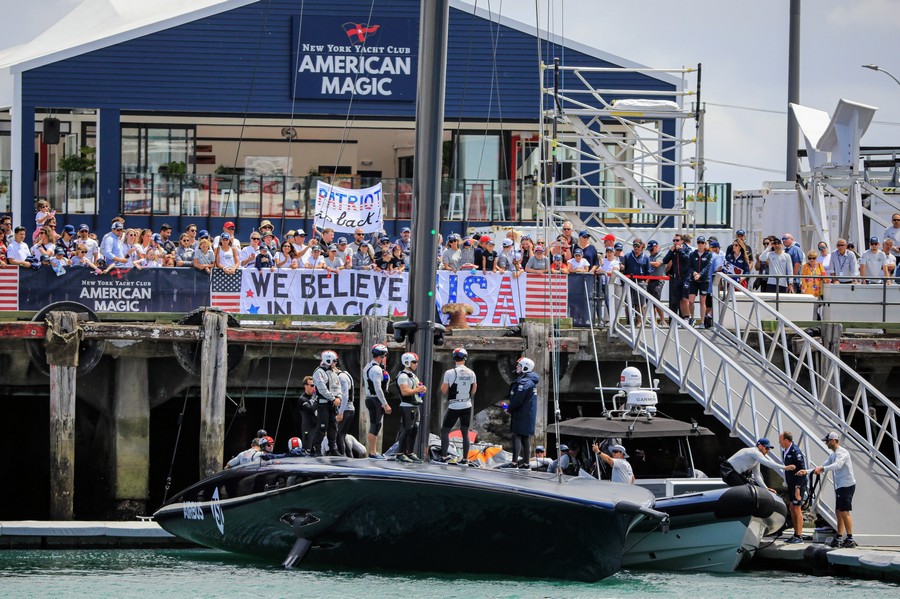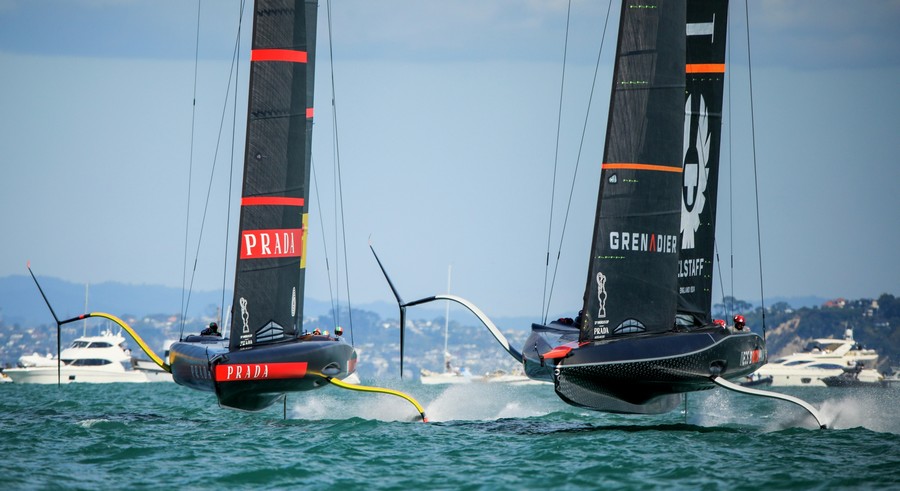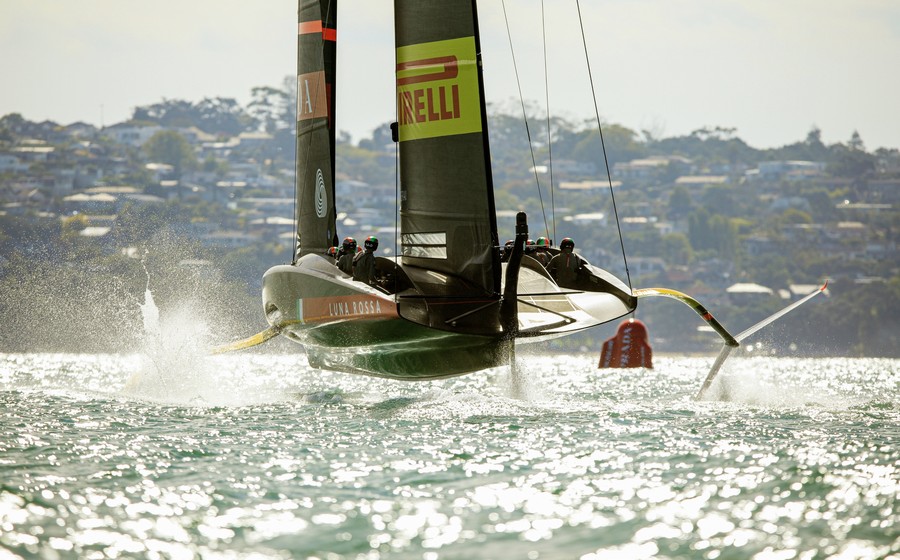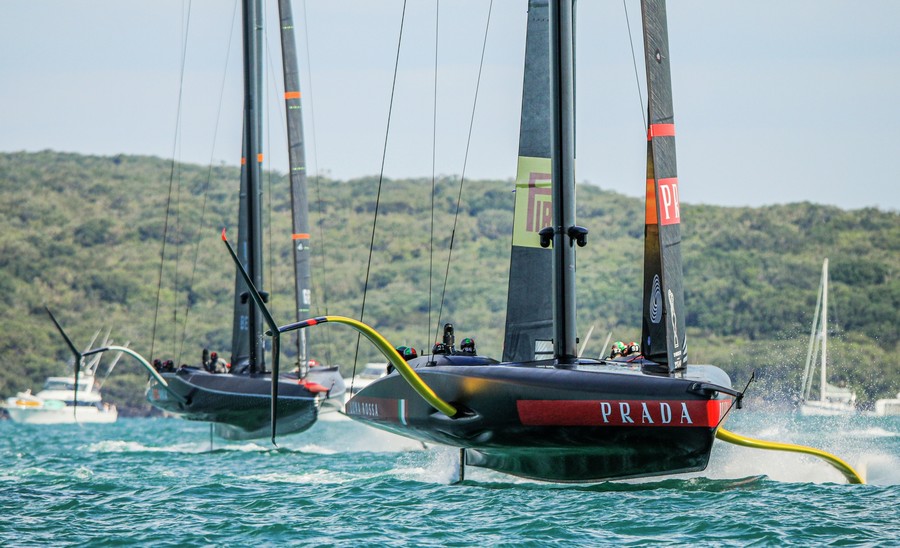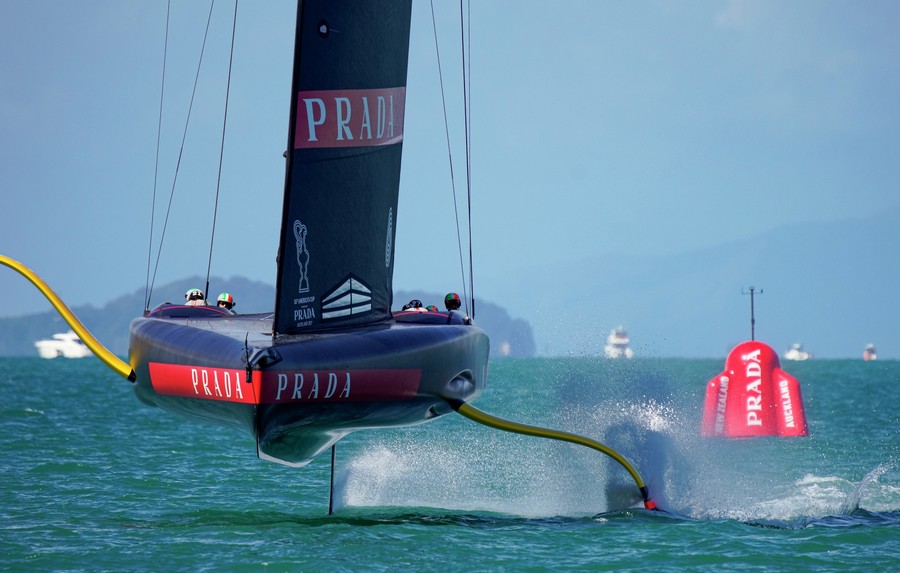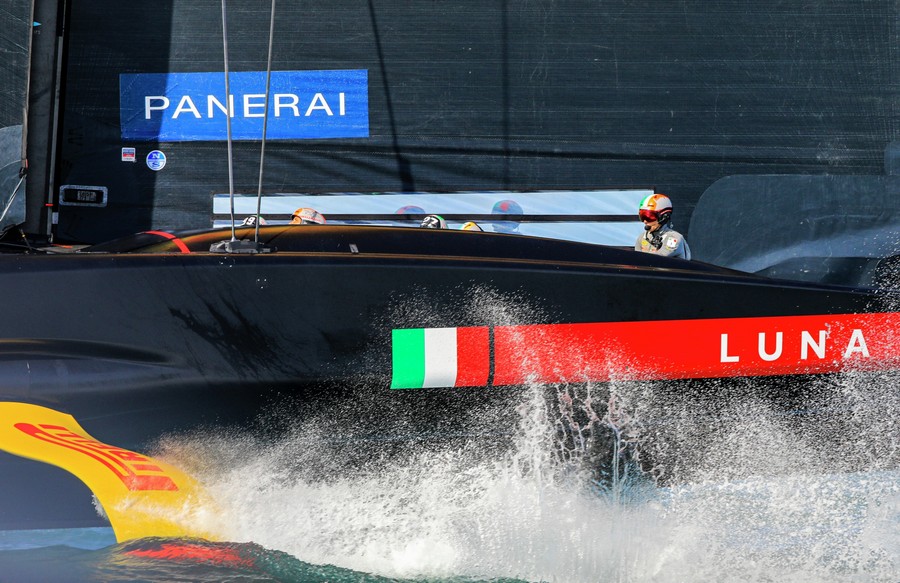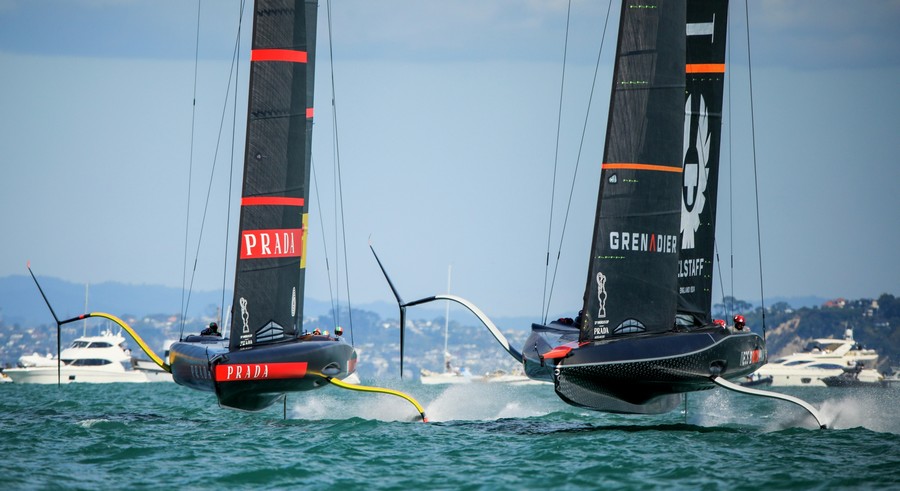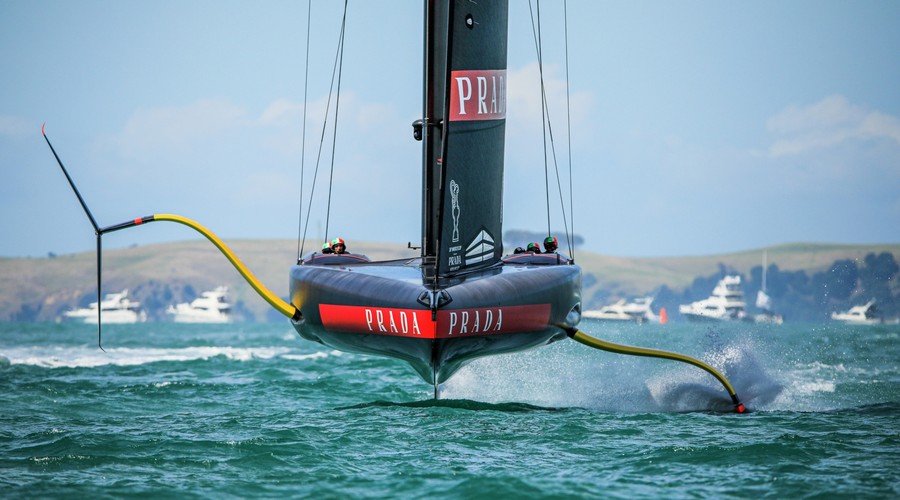Overcoming Covid-19’s impositions on the world, travel restrictions and cancellation of most global sport, the World’s oldest international sporting competition on schedule, in the waters off Auckland, New Zealand. This spectacular regatta will climax in March this year. That is when the famed ‘Auld Mug’ and very emblem of speed supremacy afloat – The America’s Cup – will either be retained by New Zealand or will relocate to Europe. Land-bound sailors and sports enthusiasts can readily catch the action on www.americascup.com/how-to-watch.
An essential step to winning the America’s Cup is to first win the Prada Cup. This is awarded the fastest yacht, beating off all others in a Challenger Series. The 36th challenge for the 150-year-old international contest took place on Auckland’s Hauraki Gulf, that pitted three teams, each racing revolutionary new designs of foiling, single-hull craft, which fly above the water at speeds up to 100km per hour, powered solely by wing-sails.
Three well-funded syndicates challenged the holders; one each from Italy, from Britain and from the USA. The Challenger Series began in January 2021, with match-races between each of the challengers to determine ranking. Italy’s Luna Rossa bested America’s Patriot in the semi-final, (the latter scrambling over 11 days, to repair structural damage suffered from an uncontrolled crash, holing and near sinking. Alas salt-water insurmountably compromised its electronics).
The Prada Cup Challenger Series finished at 5:46pm NZT on Feb. 21st, 2021, on the most seaward Course ‘A’; of the Hauraki Gulf. That was when Italy’s Luna Rossa won the match-point race over Team UK, taking the Cup by a comprehensive 7 wins to 1, over Britain’s Britannia. For Italy’s Team Prada Pirelli, a short celebration and the Challenger Series trophy in their cabinet. Now it is on to the Big One.
Five out of the last nine winners of the Challenger Series have gone on to victory over the Defenders, earning the coveted America’s Cup. The Defender this time is Emirates Team New Zealand, racing Te Rehutai. Emirates Team NZ has held the America’s Cup since June 2017, when it beat Oracle Team USA in a thrilling upset victory (7:1 matches) racing 50-foot, foiling catamarans on the Great Sound in Bermuda.
The winner of the Prada Cup advances by right as the sole 36th challenger for the America’s Cup. New Zealand has had no Defender’s Series. Race-hardened, Luna Rossa will face off against hitherto untested Te Rehutai in a similar, best-of-13 (aka, first-to-7 wins), match series to be held between March 6th and 22nd.
“The Fastest Racing Monohulls on the Planet” – Class of the 36th America’s Cup
Forget any ideas of conventional yacht racing, lead keels, Kevlar sails, spinnakers, or even multi-hulls. These innovative behemoths are like no ‘boats’ ever seen before, joining aerospace technology to naval architecture. ‘Sailing’ at up to three-times the wind speed, these boats literally fly – about a metre above the water and reach speeds of 100km/hour. This totally new class of boat, designated ‘AC75s’, are technically described as ‘canting foil monohulls’.
The AC75 Class craft are 22.7m (75 feet) long, have a mast height of 26m (85 feet), are constructed of carbon-fibre and weigh just 6.5 tonnes.
Air-freighted to NZ, the single hull rises from the water like a hydrofoil, riding on one or both of canting arms protruding one from each side, and stabilised, [most times, anyway], by a small foil on the bottom of the rudder. Working parts – the mast, rigging, cant arms and their hydraulics are identical between boats. Parts below water, hull shape, crew positions and double-skinned wingsails are proprietary to Teams. Both Te Rehutai (in practice: www.youtube.com/watch?v=SODQVrcR3KU), and Patriot (in competition) have capsized.
AC75’s, 11-man crew are limited to between 960 and 990 kg collective weight. In addition to the usual Skipper, Helmsman, Sail Trimmer and Race Tactician is a Flight Controller. This new position carries responsibility for keeping the boat in level flight throughout the race, including through all turns, as well as on upwind and downwind legs. ‘Grinders’ work manual pumps to powerup hydraulics, which shape the wingsail, power winches, raise or lower the foil arms, and adjust trim-tabs on the foils to maintain flight.
For a racing yacht to ‘fall off’ it foils, thereby floating like a conventional boat, is akin to a Formula One car developing a puncture; it almost certainly surrenders the race.
The America’s Cup Course
Each duel of the America’s Cup contest is held on one of four courses, chosen by the independent race organisers on the day of the race. Wind speed needs be a minimum of 12 km/hr (6.5knots), and maximum of 39 km/hr (21knots) at commencement. Once a race is started it continues even if winds gust or strengthen. The Course itself is simple: three laps each of an upwind and downwind leg, between two marks set about 2km to 4km apart, and aligned with the wind direction. Courses are mostly close enough to shore to provide good viewing for land-based audiences, in addition to large spectator fleets. Matches last about 25 minutes and may be two per day. Real-time broadcasts include a dazzling digital package. Overlain graphics allow viewers to rapidly grasp and soon become experts on ‘lay-lines’, ‘gybes’, ‘beats’, ‘tacks’ and virtual boundaries. www.americascup.com/how-to-watch
New 5G coverage over Auckland’s harbour ensures every match of the 36th America’s Cup regatta is streamed live on YouTube, Facebook and on www.americascup.com to almost every country around the world. Racing for the America’s Cup kicks off on March 6th.
About the Author

Norman Stacey, a sometimes sailor, is an Advisor to high net-worth investors on their portfolios. A veteran of 40 years in financial markets, Norman primarily resides in Aukland, and is a seasonal denizen of Hua Hin, with occasional forays to Canada.


